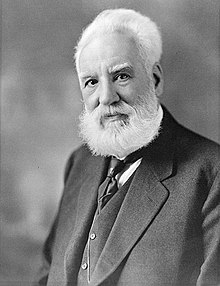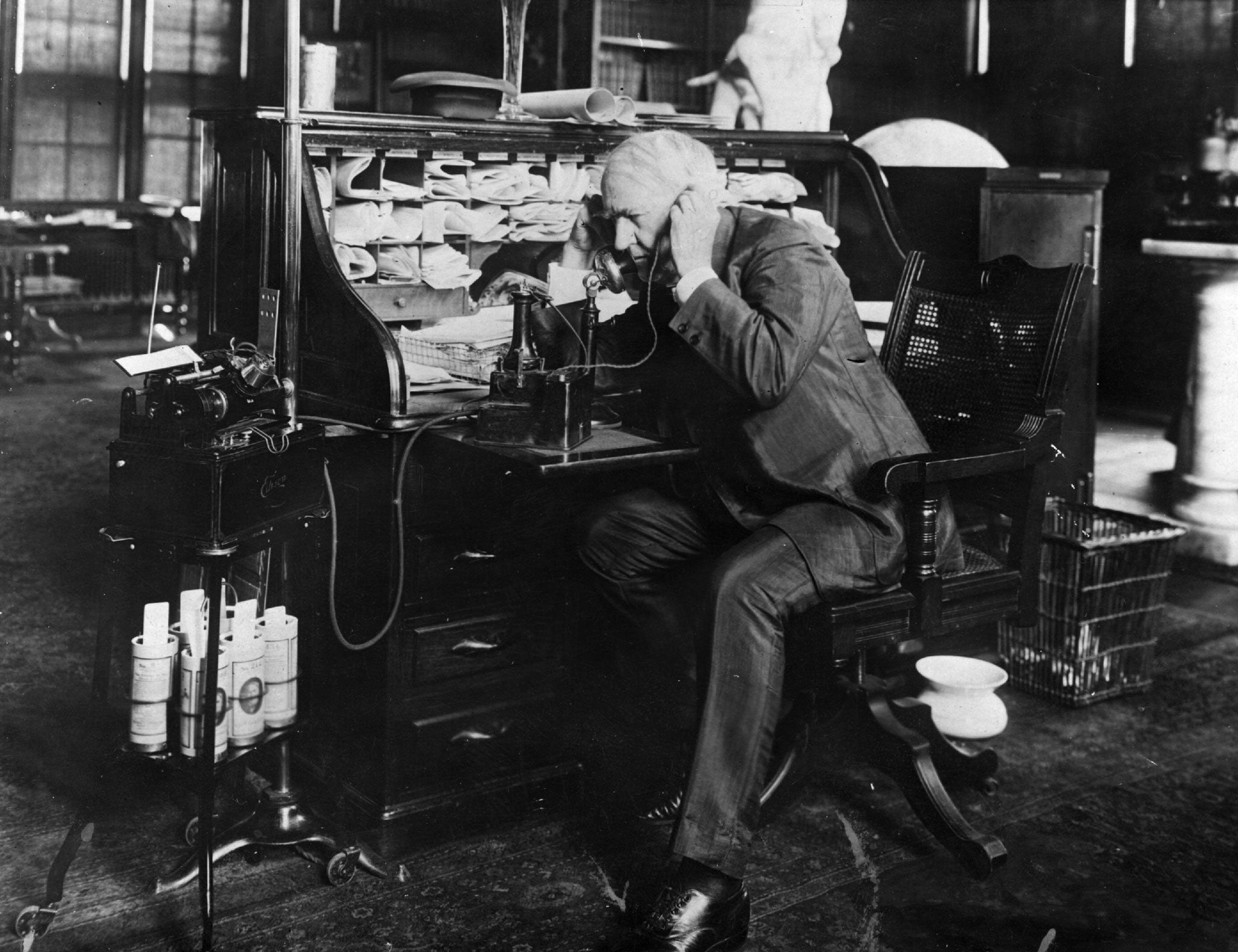https://en.wikipedia.org/wiki/Alexander_Graham_Bell
Who were the stakeholders?
Bell mentioned to Gardiner Hubbard and Thomas Sanders that he was working on a method of sending multiple tones on a telegraph wire using a multi-reed device, the two wealthy patrons began to financially support Bell's experiments.[76] Patent matters would be handled by Hubbard's patent attorney, Anthony Pollok.[77]
77-The Telephone Patent Conspiracy of 1876
"With financial support from Sanders and Hubbard, Bell hired Thomas Watson as his assistant,[N 14] and the two of them experimented with acoustic telegraphy"."On June 2, 1875, Watson accidentally plucked one of the reeds and Bell, at the receiving end of the wire, heard the overtones of the reed; overtones that would be necessary for transmitting speech. That demonstrated to Bell that only one reed or armature was necessary, not multiple reeds"
"Bell's patent 174,465, was issued to Bell on March 7, 1876, by the U.S. Patent Office.
He had agreed to share U.S. profits with his investors Gardiner Hubbard and Thomas Sanders."
The relationship between the stakeholder and the object
Thomas Sanders and Gardiner Hubbard funded Alexander Bell's invention. Because of the financial support that led Bell to hire an assistant. This resulted in the accidental discovery which led to the creation of the first telephone.
Showing posts with label Alexander Graham Bell. Show all posts
Showing posts with label Alexander Graham Bell. Show all posts
Saturday, December 8, 2018
Saturday, November 3, 2018
At first glance can you tell what this object is?
Alexander Graham Bell Telephone
At first glance can you tell what this object is?
Honestly if I saw this invention with no label, I wouldn't have a clue what it is. My first thought would be to look through what looks like an eyepiece. It looks like an object that you would look through and maybe twist the gold section in the middle to change the focus. The top two images show the same object and the third image shows an additional object which is connected to the top object. If I saw these two objects side by side, I might have a better idea of what it is used for. With the second part of the object I would, once again try and look into the section where he is clearly talking into. If sight is not its intention then I would try my other senses. Hearing is next so I would attempt talking into it which is what it's intended for.
As humans I think we are curious creatures and our method of figuring out what something is, is to test our senses on it. The first is sight, then maybe picking up and touching the object. Next we might use our voices to create sound and talk into it. I doubt we would smell it or lick it but you never know. Depends how curious you are.
The first telephone

Alexander Graham Bell
Alexander Graham Bell is the inventor of the first telephone and received his first patent in 1876. There have been hundreds of lawsuits for copyright but none have been successful. While he was a teacher for the hearing impaired, he was asked by a group of investors to perfect the perfect harmonic telegraph.
A telegraph is a system for transmitting messages from a distance along a wire, especially one creating signals by making and breaking electrical connection. Bell was set on creating a voice transmitting device. On March 7, 1876, Bell was awarded a patent on the first device and 3 days later called his assistant and electrician, Thomas Watson. The famous words were: "Mr. Watson, come here. I want you."
https://www.history.com/topics/inventions/alexander-graham-bell
 How it was made
How it was madeBell and Watson were working on a harmonic telegraph. When a reed struck on Watson's transmitter an intermittent current was converted to a continuous current. Bell was able to hear sound on his receiver confirming his belief that sound could be transmitted and reconverted through an electric wire by using a continuous electric current.
The original telephone design that Bell patented was a modified version of a telegraph. The primary difference is that it could transmit sound. Two years later he created a magnetic telephone which is consisted of a transmitter, receiver and a magnet. The transmitter and receiver each contain a diaphragm which is a metal disk. During a phone call, the vibrations of the callers voice cause the diaphragm in the transmitter to move. This motion is transferred along the phone line to the receiver. The receiving diaphragm begins vibrating thus producing sound and completing the call.
Drawbacks
Callers had to shout to overcome noise and voice distortions.
Time-lapse in the transmission.
Solution: The first phones contained a single microphone.
Thomas Edison introduced a model that had a movable listening earpiece and a stationary speaking tube.

Phones nowadays
Telephones still work on the same basic principles. The person picks up the handset and this causes the phone to connect to a routing network. When the numbers are pressed on a touch-tone keypad, signals are sent down the phone line to the routing station. Each digit is recognized as a combination of tone frequencies. The specific number will be sent to another phone and cause it to ring. When the phone is picked up, a connection between the two phones is initiated. The mouthpiece acts a microphone and sound waves from the users voice cause a thin, plastic disk inside the phone to vibrate. This changes the distance between the plastic disk and another metal disk. The intensity of an electric field between the two disks is changed as a result and a varying electric current is sent down the phone line. The receiver on the other phone picks up this current. As it enters the receiver, it passes through a set of electromagnets. These magnets cause a metal diaphragm to vibrate. This vibration reproduces the voice that initiated the current. An amplifier in the receiver makes it easier to hear. When one of the phones is hung up the electric current is broken, causing all of the routing connections to be released.
Materials
Range from glass, ceramics, paper, metals, rubber and plastic.
Primary components on circuit board are made of silicon.
Outer is made of a strong, high-impact resistant polymer.
Speakers require magnetic materials.
http://www.madehow.com/Volume-5/Telephone.html
Subscribe to:
Posts (Atom)
